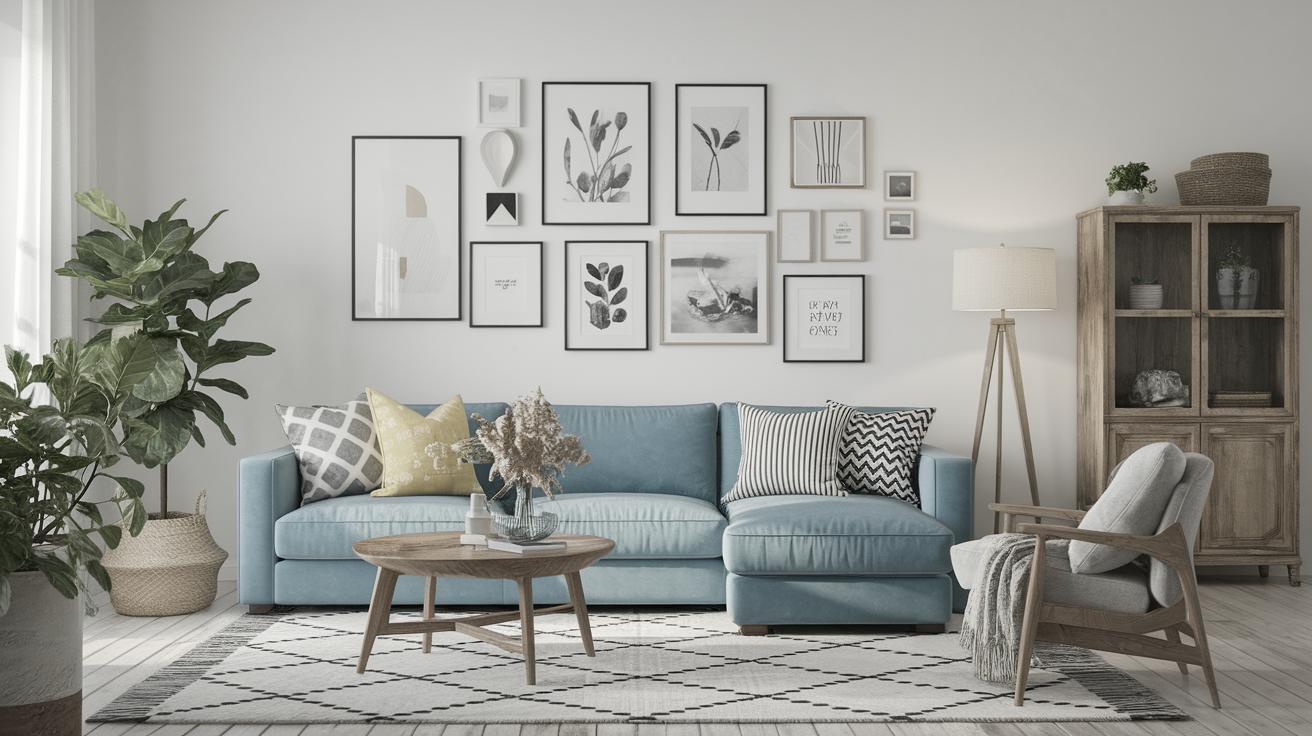How to Make a Small Space Feel Larger
Living in a small space often comes with the challenge of making it feel open, inviting, and functional. In this comprehensive guide, we delve into expert tips and tricks for decorating small spaces, from choosing the right furniture and colors to maximizing light and incorporating clever design elements. By exploring the intricacies of furniture placement, art selection, and pattern usage, we aim to provide you with a toolkit to transform your cozy abode into a spacious retreat. Discover essential strategies to create the illusion of roominess without sacrificing comfort or style.
Decorating Ideas
Decorating a small space effectively starts with understanding scale and proportion. Opt for furnishings that suit the room’s dimensions, such as multi-functional pieces that offer storage solutions or minimalist designs that don’t overwhelm. Use vertical space wisely by incorporating tall shelves or wall-mounted units to draw the eyes upward, giving the impression of a larger area.
Additionally, decluttering is key when decorating confined spaces. A clutter-free environment not only appears larger but also enhances the overall aesthetic. Implement smart storage solutions like under-bed drawers, wall hooks, and stacked trays to keep belongings organized and out of sight. These simple habits can dramatically alter your space’s perception.
For Furniture…
Shop all furniture →
When it comes to selecting furniture for small spaces, consider choosing pieces with legs rather than boxy, bulkier designs. Furniture raised off the floor allows light to flow underneath, creating an airy appearance. Moreover, transparent materials like glass or acrylic can be excellent choices for tables, as they help maintain an unobstructed line of sight.
Modular furniture that can be easily rearranged or folded away is another practical option. These solutions offer flexibility, enabling you to adapt layouts for entertaining guests or simply reorganizing to refresh the room’s look. Remember, less is more – choosing fewer, better-quality items often maximizes space functionality without clutter.
For Art and Mirrors…
Shop all art and mirrors →
Art and mirrors play a crucial role in opening up small spaces. Mirrors, in particular, are a game-changer. Strategically placing mirrors opposite windows will reflect natural light, dramatically illuminating a room and creating depth. Wall art should be proportionate to the space and hung at eye level to maintain balance and avoid visually shrinking the area.
For art, consider grouping smaller pieces together in a gallery wall format rather than opting for one large piece. This technique adds visual interest without overwhelming the room. Additionally, opting for light, pastel colors in artwork can further promote a feeling of expansiveness.
For Paint, Curtains, and Wallpaper…
Shop wallpaper →
The right color palette is crucial in broadening a room’s perception. Light and neutral colors like whites, greys, and beiges are typically most effective in reflecting light and making walls recede. If you’re fond of bold colors, consider incorporating them as accents through wallpapers or feature walls rather than painting the entire room.
Curtains should be floor-to-ceiling and hung close to the ceiling to create the illusion of height. Choose lightweight fabrics to allow for natural light penetration. If possible, select patterns that are geometric or linear to guide the eyes around the room, making it feel larger and more cohesive.
For Rugs…
Shop all rugs →
Rugs can anchor a room and define spaces, especially in open-plan areas. In small rooms, go for larger rugs that can encompass key furniture pieces like sofas and coffee tables. This unifies the space and creates a sense of continuity, unlike smaller rugs which tend to break up the area visually.
Patterns on rugs should be understated, considering that overly busy designs can shrink a space visually. Light, neutral, or monochromatic color schemes often work best in maintaining an open feel. Just like with art, positioning is crucial – a well-placed rug adds warmth and indicates key areas within a living space.
For Lighting…
Shop all lighting →
Lighting can transform a small space in an instant. Layered lighting, combining ambient, task, and accent lighting, can create depth and dimension. Ceiling lights, floor lamps, table lamps, and wall sconces used strategically can highlight different areas and enhance the room’s atmosphere.
When possible, maximize natural light. Clear windows of heavy curtains or blinds during the day to allow the sunshine in. For artificial lighting, opt for fixtures that complement the room’s scale – oversized lights can dwarf a small space, whereas smaller fixtures maintain harmony and balance.
For Pattern and Color…
Balance is key when integrating patterns and colors into a small space. While it might be tempting to abstain from patterns altogether, using them wisely can make a room feel inviting and dynamic. Choose one significant pattern to drive the focus and use solid colors elsewhere to support the overall design.
Color should be consistent yet varied in tone. Utilize a base neutral color scheme, adding pops of interest through accessories or a statement wall. This technique provides a canvas that promotes continuity, allowing individual pieces to shine and the room to feel cohesive.
Shop furnishings for small spaces →
Contributors
Contributors to this article include design experts, seasoned decorators, and small-space dwellers who have successfully transformed their settings using the strategies we’ve shared. Each contributor brings a unique perspective and firsthand experience, ensuring a comprehensive and practical guide for our readers.
Share
If this guide has inspired you, feel free to share it with others who may benefit from these tips on maximizing small spaces. Whether through social media, email, or word of mouth, spreading the word can help others enhance their homes with simple yet effective design strategies.
Filed Under:
Home Decor, Interior Design, Small Spaces
Join the Discussion
Leave a Reply Cancel reply
We welcome your thoughts and feedback on making small spaces feel larger. Share your tips and experiences in the comments below, and don’t hesitate to ask if you have any questions about implementing these ideas in your home.
Recommended For You
Home Tours
Decorating Ideas
Trendspotting
Decorating Ideas
Organizing
Elements of Style
Continue your journey towards mastering interior design with our recommended articles. Uncover more inspiration with home tours, trendspotting insights, and practical organizing tips tailored to small-space living.
Future Prospects
| Aspect | Key Strategies |
|---|---|
| Decorating Ideas | Use scale, vertical space, and decluttering |
| Furniture | Choose airy, modular designs with legs |
| Art and Mirrors | Use mirrors for light and depth, gallery walls for interest |
| Paint, Curtains, Wallpaper | Favor light, strategic curtain placement, subtle wallpapers |
| Rugs | Larger, neutral rugs to unify space |
| Lighting | Layer lighting and maximize natural sources |
| Pattern and Color | Use patterns sparingly, with consistent color themes |
Looking forward, incorporating these strategies will not only optimize your small space but also improve your quality of life by enhancing the atmosphere and functionality. Design is a continuous journey, and these future prospects promise an evolving, stylish interior that feels expansive and inviting.


